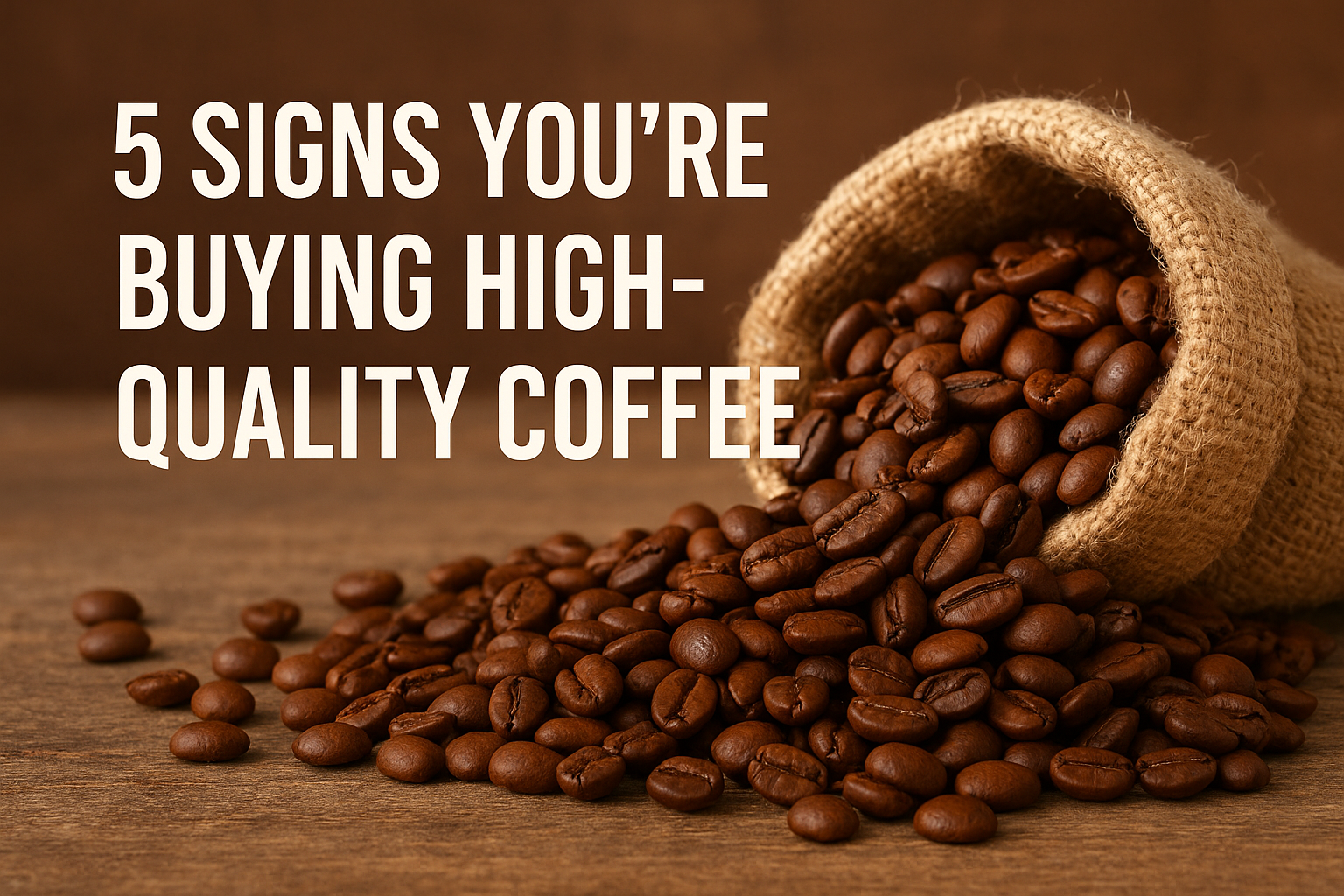For coffee lovers, nothing is more disappointing than brewing a cup only to find that it lacks flavor, aroma, and freshness. The quality of coffee beans can make or break your entire coffee experience, and knowing how to identify high-quality coffee is a skill every coffee drinker should master.
While marketing claims and attractive packaging can be deceiving, there are clear signs that can help you determine whether you’re buying coffee that is truly worth your time and money.
From the source of the beans to the way they are roasted and stored, understanding these indicators will help you consistently enjoy the best possible coffee.
1. The Coffee Has a Clear Origin and Transparency
One of the strongest indicators of high-quality coffee is transparency about its origin. Specialty coffee brands and reputable roasters will clearly state where the beans come from, often specifying the country, region, and even the specific farm.
This information isn’t just for show—it speaks to traceability and accountability. Coffee that is sourced from reputable farms often comes with details about the altitude at which it was grown, the processing method (such as washed, natural, or honey process), and sometimes even the variety of coffee plant.
This level of detail is rare in mass-produced coffee, which often blends beans from multiple sources without providing any real information about their origins. If the packaging clearly tells you where your coffee comes from and how it was processed, it’s a good sign you’re buying something of higher quality.
2. The Roast Date Is Fresh and Clearly Marked
Freshness is one of the most important aspects of coffee quality. Coffee is best enjoyed within a few weeks of roasting, as the natural oils and compounds that give coffee its flavor begin to degrade over time.
High-quality coffee will almost always have a roast date clearly printed on the package, not just an expiration date. This transparency allows you to gauge exactly how fresh your coffee is. In contrast, lower-quality brands often use “best before” dates that can be months or even years after roasting, hiding the fact that the coffee may already be stale.
When buying coffee, look for beans that were roasted within the past two to four weeks for optimal freshness and flavor.
3. The Aroma Is Rich and Complex
A quick smell test can tell you a lot about the quality of coffee. High-quality coffee beans will have a rich, inviting aroma that reflects their origin and roast level. Depending on the coffee, you might pick up notes of chocolate, caramel, berries, citrus, nuts, or even floral undertones.
If the beans smell flat, musty, or overly bitter, it could be a sign that they are stale or poorly roasted. Good coffee should make you excited to brew it the moment you open the bag.
Specialty coffee beans tend to have complex aromas because they are carefully roasted to highlight the unique characteristics of each batch, whereas lower-quality beans often smell burnt or generic due to over-roasting meant to mask defects.
4. The Beans Look Uniform and Well-Roasted
The appearance of coffee beans can be a clear giveaway of their quality. High-quality beans are typically uniform in size and shape, with a consistent roast color. They should not have visible defects such as cracks, holes, or irregular discoloration.
Uneven roasting—where some beans are much darker than others—can indicate poor roasting practices, which often result in inconsistent flavor.
While some coffee beans may have a slight sheen from natural oils, overly oily beans can be a sign of over-roasting or aging, which may negatively affect the taste.
Whole beans should also be intact, not broken or chipped, as damage can cause the coffee to lose flavor more quickly.
5. The Flavor Is Balanced and Distinct
Ultimately, the truest test of coffee quality is in the taste. High-quality coffee will have a balanced flavor profile, with pleasant acidity, sweetness, and bitterness in harmony.
Depending on the bean’s origin and roast, you may taste fruity, nutty, chocolaty, or floral notes. What sets good coffee apart is that these flavors are clear and distinct rather than muddled or one-dimensional. Poor-quality coffee often tastes bitter, sour, or dull, with no real character.
When brewed correctly, high-quality coffee should be smooth and enjoyable without the need for excessive sugar or cream to mask unpleasant flavors.
Additional Tips for Choosing High-Quality Coffee
Beyond these five main signs, there are a few extra things to keep in mind when shopping for coffee. First, whole beans are almost always better than pre-ground coffee, as grinding releases aroma and flavor that dissipate quickly.
If possible, buy coffee from local roasters who roast in small batches to maintain freshness and quality control.
Also, look for certifications like Fair Trade, Organic, or Rainforest Alliance if ethical and sustainable sourcing is important to you—though keep in mind that certification alone is not a guarantee of better taste, it often signals that the producer values quality and fair practices.
Final Thoughts
Knowing how to recognize high-quality coffee can dramatically improve your coffee experience. By paying attention to the origin, roast date, aroma, appearance, and flavor of your coffee, you can make informed choices that lead to better brews every time.
Good coffee is the result of care at every stage—from the farm to the roastery to your cup—and when you invest in quality, it shows in every sip.
The next time you shop for coffee, use these five signs as a guide to ensure you’re getting beans that will deliver on flavor, freshness, and overall satisfaction.
